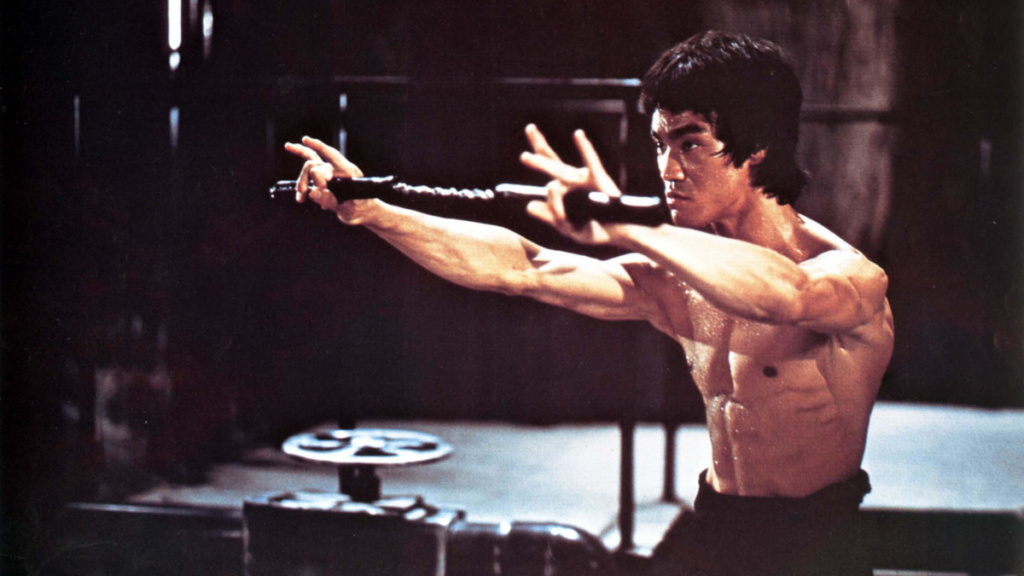Nunchucks also known as nunchaku, are traditional martial arts weapons with roots in Okinawan martial arts. Originating from a rice-threshing tool, nunchuck’s have evolved into iconic weapons associated with skill and discipline. They consist of two cylindrical sticks connected by a short chain or cord, allowing for fluid movement and various striking and defensive techniques. Mastery of nunchuck’s requires rigorous training and discipline, with novices starting with basic drills to develop hand-eye coordination and strength. Nunchuck’s have become cultural symbols, popularized in films and television, and have also been embraced by martial artists and performers. Martial arts schools worldwide offer nunchuck training, emphasizing its historical significance and practical applications. However, some jurisdictions have legal restrictions on the possession and use of nunchuck’s due to potential misuse. Despite these restrictions, nunchuck’s continue to captivate and inspire practitioners, contributing to the preservation and evolution of a martial arts tradition that spans centuries.
Historical Origins:
The roots of nunchucks can be traced back to Okinawa, Japan, where they were originally developed from a tool used for threshing rice. Farmers modified these tools into weapons to defend themselves during times of conflict. The versatility of nunchucks quickly caught the attention of martial artists, who began incorporating them into their training.
Construction and Design:
Nunchucks typically consist of two cylindrical sticks connected by a short chain or cord. The sticks, made from various materials such as wood, metal, or plastic, are approximately 12 to 14 inches in length. The chain or cord allows for fluid movement, enabling practitioners to execute a variety of striking and defensive techniques.
Techniques and Training:
Mastery of nunchucks requires rigorous training and discipline. Novices start with basic drills to develop hand-eye coordination and strength. As practitioners advance, they learn complex patterns and combinations, incorporating spins, flips, and strikes into their repertoire. The fluidity of movement and precision required for nunchuck techniques make it both a challenging and rewarding discipline.
Self-Defense Applications:
While nunchucks are often associated with flashy martial arts performances, they also have practical applications in self-defense. The weapon’s design allows for quick strikes and blocks, creating an effective means of protection in close-quarters combat. However, it is essential for practitioners to undergo proper training to use nunchucks safely and effectively in self-defense situations.
Cultural Significance:
Nunchucks have transcended their martial origins to become cultural symbols, popularized in films and television. Bruce Lee’s iconic use of nunchucks in movies like “Enter the Dragon” catapulted the weapon into mainstream consciousness. The cultural impact of nunchucks extends beyond martial arts, influencing fashion, art, and even popular music.
Modern Applications:
In contemporary times, nunchucks continue to be embraced by martial artists and performers. Martial arts schools around the world offer nunchuck training as part of their curriculum, emphasizing the weapon’s historical significance and practical applications. Additionally, the popularity of mixed martial arts (MMA) has led to a resurgence of interest in traditional martial arts weapons, including nunchucks.
Legal Considerations:
Despite their rich history and cultural significance, nunchucks face legal restrictions in some jurisdictions. In certain countries and states, possession and use of nunchucks are regulated due to concerns about their potential for misuse. Understanding and adhering to local laws is crucial for individuals interested in practicing or incorporating nunchucks into their training.
Conclusion:
Nunchucks are more than just a flashy weapon seen in martial arts films – they represent a rich history of adaptation, discipline, and cultural influence. From their humble beginnings as farm tools to their modern-day applications in self-defense and performance art, nunchucks continue to captivate and inspire. As practitioners hone their skills with this unique weapon, they contribute to the preservation and evolution of a martial arts tradition that spans centuries.







